 the Archive of World War 1 Photographs and Texts
the Archive of World War 1 Photographs and Texts

World War 1 Trenches
This section offers information about the trenches of world war 1, including what life was like for soldiers in the trenches, how trenhces were built, and why they were used.
At the beginning of the war, both sides envisioned a war of movement and maneuverability in which cavalry and the rapid deployment of troops by train and motor transport would decide the outcome of the struggle. Neither the Germans nor the allies envisioned a long war. However, as the fighting developed, both sides began to dig in and fortify their positions using trenches.
At first the trenches were improvised and local. they would be built to defend a particular strong point. But trenches proved very effective in shielding soldiers from artillery fire and machine gun fire. As a result the system of trench fortifications was extended and elaborated pun until, on the Western Front, it stretched all the way from the English Channel to the border of Switzerland. Trenches were also employed on the Italian front between the Italians and the Austrians. However the existence of natural mountain barriers on the Italian front meant that th trenches on those fronts were different.
On the Western Front, a the trenches were appallingly filthy, wet, ditches cut into the countryside, and facing the enemy trenches at a distance of sometimes only a few yards. In between the opposing trenches was the so called "no man's land", which the soldiers would have to cross in order to attack the other side's trenches.
An attack against the other side's trench system would be started by a intense artillery bombardment and sometimes the use of poison gas to soften up the defenders and destroy the defender's artillery an machine gun emplacements. Eventually, when the commanders deemed that enough damage had been inflicted, the attackers would get the order to "go over the top" which meant leaving the relative safety of the trenches and go over the top of the ridge, into no man's land, charging the opposing trench.
The enemy trenches were built and so artillery and poison gas usually failed to completely destroy the enemy's defences. The attackers faced intense machine gun fire as they charged across no-man's land and most would be mowed down before they reached the enemy trench.
Those that reached the enemy trench would have to engage the enemy in rifle and bayonet combat. If they won the first, forward trench, there was always a second and third line of defence. Few attacks succeeded in breaching the enemy trench defences and those that did were often beaten back by counterattacks launched by enemy reserves tasked with countering any enemy breakthrough.
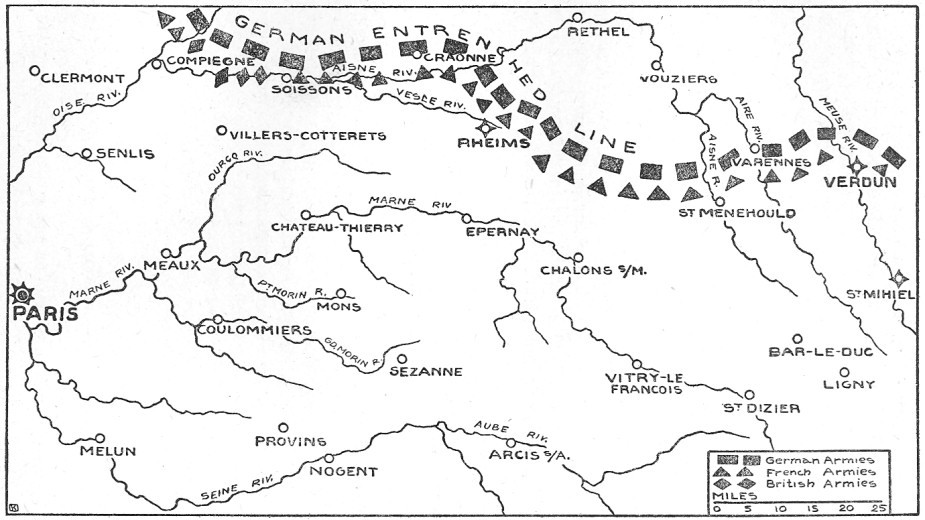
This diagram illustrated the extent of German and Allied trench lines near Verdun. In fact the actual trench system stretched for hundreds of miles in each direction. Within this system millions of mean lived and died in horrific conditions of filth, disease and carnage.
|
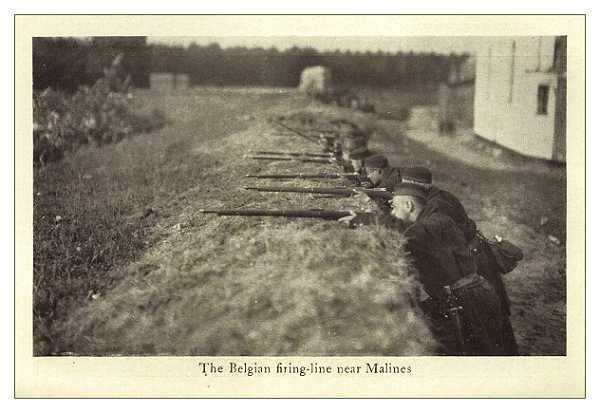 WW1 Belgian soldiers behind an embankment, near Malines.
WW1 Belgian soldiers behind an embankment, near Malines.
|
In this picture, Belgian soldiers have established a defensive firing line behind a pre-existing embankment. In the early stages of the war, both sides took cover behind natural terrain or man made structures such as farm houses, dikes, and road embankments. But soon, both sides began to dig extensive trench fortifications.
|
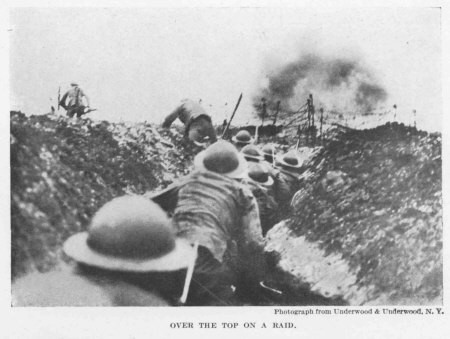 American Soldiers Going Over the Top
American Soldiers Going Over the Top
|
In this combat photograph American soldiers are seen going "over the top" of their trenches to launch a raid against the German lines. Barbed wire can be seen in the foreground and beyond that can be seen the burst of an artillery shell. These raids were always costly for the attackers because the trenches and the terrain favoured the defenders.
|
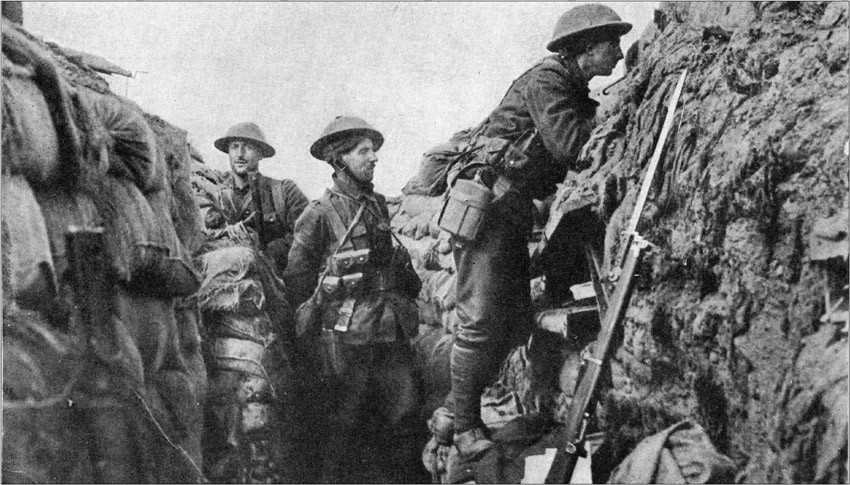
Allied soldiers inside their trenches. Note the extremely cramped conditions and the ladder that they had to use in order to see over the top.
|
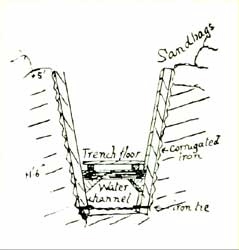
Cut away diagram of a typical trench construction |
The diagram to the left illustrates the recommended design of a trench. It was taken from an American training manual. Note the bottom of the trench. In this design, water from rain and underground sources would flow in a channel at the bottom while the soldiers would stand on a raised wooden platform in order to keep their feet dry. But in practice, most trenches were muddy and water logged. Men spent their days in several feet of water and disease and trench foot were common.
|
Life and death in the trenches was indescribably horrible. Soldiers suffered from dysentery due to contaminated water, trench foot because of standing in water that collected at the bottom of the trenches, and the horror of being under artillery and gas attack while in a confined space. To add to the horror, dead bodies and body parts would collect at the bottom of the trench and could not be removed for days because of combat conditions.
Still, there were some that found reason to romanticize the trench exerience. George T. McCarthy, a Chaplain in the United States Army who served on the Western Front wrote: “Boys went into the trenches, but men came out of them!;”